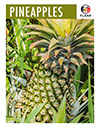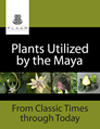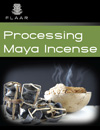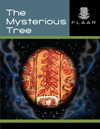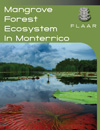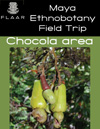Mayan Stone Temples and Palaces use a lot of Wood
It’s the stone mosaic sculptures on the front of Puuc palaces of Uxmal that are impressive. It is the stone mask facades of Chenes style palaces of Campeche that are memorable. Rio Bec twin-temple palace facades are thousands of blocks of stone. Tikal, Yaxha, Nakum, Naranjo temples and palaces are stone front, back, sides, and insides.
But inside, yes, the walls and vaults are stone: but the lintels over the doorways are usually of wood. The structural support beams across the vaults are wood. And as we mention later on this page, wood is used elsewhere in several monumental stone temples. So the use of wood in architecture is an educational category in our upcoming cataloging of our 50+ years of photographing Classic Mayan monumental architecture.
Wood is used as Lintels, primarily for the main doorway
It is normally estimated that the wood most commonly used for lintels over doorways was lumber from the Manilkara zapota tree. In local Spanish this is called (chico zapote, sapodilla, the tree that produces chicle to make chewing gum). But occasionally the Maya architects used wood of palo de tinto, also called palo de Campeche, Haematoxylum campechianum, since there is lots of this tree in seasonal swamps there in Campeche area of Mexico (and used to be millions of this tree in the interior seasonal swamps of Belize).
Stone lintels are popular at Yaxchilan and Bonampak; we show you these in our lecture on 7th-9th century architecture of those impressive sites of Chiapas, Mexico.
A few doorways of temples and palaces have vaulted arches. We cover this in our photo archive segment on Corbelled Arches (we also show you all the ancient Mayan vaults that are rounded; yes, we know they are not supposed to exist, but we have found four so far).
Did any temples or palaces have wooden ceilings?
One goal of the FLAAR Photo Archives of Architecture is literally “to take you inside Mayan temples and palaces” and let you see and experience architecture features you were not shown to you at Chichen Itza, Tikal, and Copan. I discovered a wooden ceiling in one of the structures that I excavated over half a century ago; we can even estimate what tree species was used).
Glossary on wood used in masonry Mayan temples and palaces
If you search Google for wood used in Mayan temples and palaces you get lots of different words. Lintels obviously. But the round wooden poles, that were often palo de tinto, these are called beams (but they are not up in the roof). They are called cross-ties (but they are not “tie-ing” up anything). Transverse beams is used by CIW archaeologist Ledyard Smith for Uaxactun Structure A-XVIII. An illustrated glossary is in preparation for the lecture on wood use in stone-vaulted buildings (and, let’s not forget, wood use in wooden ceilings!
Often the physical wood is still preserved, as I noticed while excavating 9th century vaulted rooms at Tikal in 1965. I still have the original photographs.
First posted September 2020.








